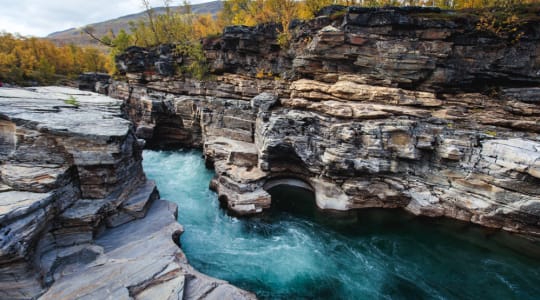
Abisko National Park is a protected area in the northern part of Sweden, located in the Lapland region. It covers an area of 77 square kilometers and was established in 1909, making it one of the oldest national parks in Sweden. The park is named after the village of Abisko, which is situated at the southern end of the park and serves as a gateway to the park's wilderness area.
The landscape of Abisko National Park is characterized by rugged mountains, deep valleys, and vast expanses of untouched wilderness. The park is home to a diverse array of wildlife, including reindeer, moose, lynx, wolverines, and arctic foxes, among others. The park is also famous for its birdlife, with over 100 species of birds found in the area.
One of the park's main attractions is the Abisko Aurora Sky Station, which is located on Mount Njullá, a 900-meter high mountain within the park. The sky station provides visitors with a unique opportunity to witness the Northern Lights, also known as Aurora Borealis, which is a natural light display that occurs in the polar regions.
Abisko National Park is also a popular destination for hiking, with numerous trails throughout the park that cater to a range of difficulty levels. The most popular trail is the Abisko-Nikkaluokta Trail, a 110-kilometer trail that takes hikers through some of the park's most spectacular scenery. Other activities available in the park include fishing, skiing, and snowshoeing.
Cross-Border Adventures Near Abisko National Park
Discover cross-border adventures near Abisko National Park. Explore neighboring countries with similar attractions and extend your travel experience across borders.

